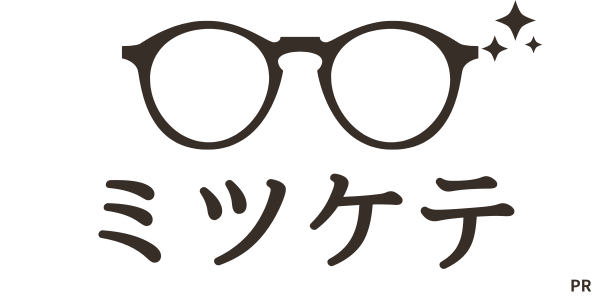Many Japanese couples wonder if they can realistically receive 400,000 yen in pensions each month. While this figure suggests a comfortable and stable retirement, not every household can reach it. By analyzing income patterns, pension structures, and living simulations, we can see what conditions make this possible and how couples should prepare.
- Is a Monthly Pension of 400,000 Yen Really Achievable?
- Model Cases of Pension Amounts
- Living Simulation with 400,000 Yen a Month
- Comparing Different Pension Levels
- Conditions for Dual-Income Couples to Reach 400,000 Yen
- Future Medical and Care Costs to Consider
- How to Prepare if the Pension Falls Short
- Conclusion
Is a Monthly Pension of 400,000 Yen Really Achievable?
The pension amount depends heavily on work history and salary level. In particular, whether both spouses have been enrolled in Employees’ Pension Insurance for a long period is a decisive factor.
The National Pension provides a maximum of about 66,000 yen per month. For a couple, that adds up to about 130,000 yen. On top of this, the Employees’ Pension is added. If one earns around 6 million yen annually for 40 years, the Employees’ Pension could reach 150,000–180,000 yen monthly. If both spouses meet this condition, that’s more than 300,000 yen combined. Adding the basic pension brings the total close to 400,000 yen.
However, not every couple can reach this level. Those with primarily non-regular employment or self-employed backgrounds often receive much less. Thus, the key conditions for 400,000 yen are “dual-income + Employees’ Pension enrollment + long-term employment.”
Model Cases of Pension Amounts
Pension amounts differ greatly depending on how couples work. Below is a table summarizing common scenarios.
| Couple’s Work Pattern | Estimated Pension | Conditions |
|---|---|---|
| Dual-income, both full-time (6 million yen/year × 2, 40 years) | About 400,000 yen | Employees’ + Basic Pension combined |
| Husband full-time (6 million yen), wife part-time (not enrolled in Employees’ Pension) | About 280,000 yen | Husband’s Employees’ + Basic Pension, wife only Basic Pension |
| Dual-income, mostly non-regular jobs | About 200,000 yen | Mainly National Pension, short Employees’ Pension enrollment |
| Self-employed couple | About 130,000 yen | National Pension only, full contributions |
From this comparison, it is clear that only couples who both work full-time with long-term Employees’ Pension enrollment can realistically exceed 400,000 yen.
Living Simulation with 400,000 Yen a Month
A monthly pension of 400,000 yen allows for a very comfortable retirement. Generally, around 360,000 yen is considered necessary for a “comfortable lifestyle.” Since 400,000 yen exceeds this, couples can enjoy hobbies and travel while covering all essentials.
| Item | Estimated Cost | Notes |
|---|---|---|
| Housing | 80,000 yen | Maintenance for owned homes or rent for leased homes |
| Food | 80,000 yen | Includes dining out and indulgences |
| Utilities | 25,000 yen | Seasonal fluctuations |
| Communication | 15,000 yen | Smartphone and internet |
| Medical & Insurance | 30,000 yen | Increases with age |
| Entertainment & Socializing | 70,000 yen | Travel, hobbies, gifts for grandchildren |
| Miscellaneous | 50,000 yen | Appliances, daily goods |
| Total | About 350,000 yen | 5,000 yen surplus can be saved or reserved for future care costs |
Comparing Different Pension Levels
If the pension is only 300,000 yen, lifestyle options decrease. The following comparison table clearly shows how much difference in financial freedom each pension level provides.
| Pension Level | Basic Living Expenses | Surplus | Lifestyle Freedom |
|---|---|---|---|
| 400,000 yen | 350,000 yen | 50,000 yen | Able to enjoy hobbies and travel |
| 300,000 yen | 270,000 yen | 30,000 yen | Limited spending on leisure |
| 200,000 yen | 250,000 yen | Nearly none | Significant cuts in food and social costs |
At 400,000 yen, financial stability is strong, whereas 200,000 yen requires strict cutbacks in daily living.
Conditions for Dual-Income Couples to Reach 400,000 Yen
Long-Term Enrollment in Employees’ Pension
40 years or more of contributions is the benchmark. Shorter enrollment means significantly lower pensions.
Above-Average Salary Levels
A worker earning 6 million yen annually will receive tens of thousands of yen more per month in retirement than someone earning 4 million yen.
Additional Benefits
Certain conditions allow for spousal pension additions (kakyu nenkin or furikae kassan), increasing the overall pension amount.
Future Medical and Care Costs to Consider
Even with a 400,000-yen pension, medical and care expenses can reduce financial flexibility.
| Item | Average Cost | Impact on 400,000 Yen Pension |
|---|---|---|
| Medical costs (70s couple) | 30,000–40,000 yen/month | Manageable with surplus |
| At-home care services | 50,000–70,000 yen/month | Requires using savings |
| Nursing home admission | 150,000–250,000 yen/month | Impossible with pension alone, assets must be used |
This shows that once long-term care begins, even 400,000 yen may not be sufficient. Saving the surplus is crucial.
How to Prepare if the Pension Falls Short
- Use iDeCo or corporate pensions for additional savings
- Work after retirement through re-employment or part-time jobs
- Reduce fixed living costs such as insurance and utilities
- Pay off housing loans before retirement
Conclusion
A 400,000-yen monthly pension is entirely achievable for dual-income couples who work full-time with long-term Employees’ Pension contributions. Since it exceeds the estimated 360,000 yen required for a comfortable lifestyle, it provides the means for a secure and enjoyable retirement.
However, not every household reaches this amount. Non-regular workers and the self-employed often receive much less. This makes asset-building and careful financial planning essential.
A “400,000 yen pension per month” is not a fantasy but a realistic figure if the right conditions are met. By confirming your future pension estimate early and supplementing any shortfall through savings and post-retirement work, you can ensure a more secure and fulfilling retirement.




